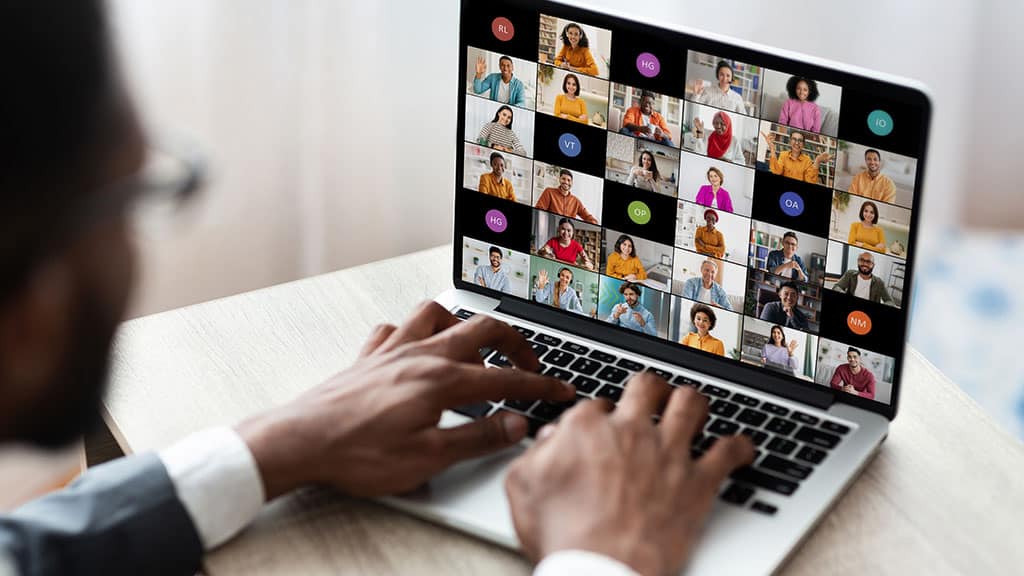Utilizing Webinars for Lead Generation
The first step in utilizing webinars for lead generation is to define clear and measurable objectives that align with your broader marketing goals. Establishing your webinar objectives involves deciding whether the primary aim is to raise brand awareness, capture new leads, or educate your audience about specific products and services. A well-defined objective will guide every aspect of the webinar, from the content you prepare to the promotional strategies you deploy. For example, if your goal is to generate leads, you might focus on a topic that addresses a common pain point within your industry and offers actionable solutions. This focus ensures that the webinar not only attracts attendees but also motivates them to provide their contact information or engage further with your brand. Planning objectives also involves setting key performance indicators such as registration rates, attendance numbers, and post-webinar conversion metrics. These KPIs will help you measure the success of your webinar and inform future campaigns. A clear objective serves as the foundation for your entire webinar strategy, making it easier to coordinate tasks, allocate resources effectively, and ultimately, drive more qualified leads. Aligning these objectives with your overall digital marketing strategy creates a seamless pathway for moving prospects through the sales funnel, ensuring that every element of your webinar is purpose-driven and results-oriented.
Identify Your Target Audience
Once you have established your objectives, the next crucial step is identifying your target audience. Understanding who your ideal attendees are enables you to tailor your webinar content to address their specific needs, challenges, and interests. This process begins with developing detailed buyer personas that represent your potential customers. Consider factors such as their industry, job roles, common pain points, and the type of information they typically seek. When you clearly define your target audience, you can design the webinar to speak directly to their concerns, making it more relevant and engaging. Identifying the target audience also involves understanding where they spend time online and what channels they use to consume content. This insight allows you to craft a focused promotional strategy that reaches the right people. For instance, if your ideal audience comprises business professionals, you might prioritize platforms like LinkedIn and industry-specific forums for promotion. Tailoring your messaging to the audience’s level of expertise and their stage in the buyer’s journey further enhances the effectiveness of the webinar. By knowing exactly who you are targeting, you ensure that the content, tone, and even the technical aspects of the webinar are optimized for engagement, increasing the likelihood of converting attendees into leads. This targeted approach creates a more personalized experience that resonates with potential customers and builds lasting relationships.
Choose the Right Webinar Topic
With clear objectives and a well-defined audience in place, the next step is selecting a webinar topic that offers significant value and directly addresses the needs of your target audience. The ideal webinar topic should be both relevant and timely, drawing on current industry trends or common challenges that your audience faces. Consider topics that not only showcase your expertise but also provide actionable insights that attendees can immediately apply to their own businesses. A successful topic can educate, inspire, and motivate participants to engage further with your brand. To ensure maximum impact, choose a topic that stands out from the typical content your audience sees and that fills an existing knowledge gap. Brainstorm ideas that connect directly to the pain points and interests identified in your buyer personas. For example, if your audience is primarily composed of decision-makers looking for practical solutions, a webinar that offers step-by-step guidance on overcoming specific business challenges will be highly attractive. Once you have chosen a topic, ensure that all aspects of the webinar—from the promotional materials to the presentation itself—reinforce the key message. By doing so, you create a cohesive and compelling narrative that not only drives registration but also fosters engagement and conversion. A carefully selected topic is the linchpin of a successful webinar, acting as the catalyst for generating quality leads and strengthening your overall digital marketing strategy with professional lead gen services.
When organizing a webinar, planning the content and selecting the right format is crucial for engaging your audience and achieving your lead generation goals. Start by creating a clear agenda that outlines the key topics you will cover, ensuring each segment of the presentation flows logically and builds upon the previous one. A well-structured webinar should have a strong opening that grabs attention, followed by informative segments that deliver valuable insights, and finally a compelling conclusion that motivates viewers to take the desired action. Incorporate interactive elements such as live polls, Q&A sessions, or interactive quizzes to keep attendees engaged throughout the session. These elements not only provide real-time feedback but also encourage active participation, making the experience more memorable. Deciding on the format is equally important. Depending on your objectives and audience preferences, you might choose a live presentation, a panel discussion featuring industry experts, or a dedicated Q&A session that allows for direct interaction. A hybrid model that combines these elements can also be effective, offering a balance between delivering expert content and engaging with the audience. By thoughtfully planning both the content and the structure of your webinar, you set the stage for a successful event that not only educates your audience but also drives high-quality leads.
Select the Appropriate Tools and Platforms
Choosing the right tools and platforms is essential for ensuring a smooth webinar experience that meets both your technical requirements and the expectations of your audience. Begin by researching reliable webinar platforms that offer robust features such as screen sharing, live polls, real-time chat, and recording capabilities. The platform should be scalable, allowing you to accommodate the anticipated audience size while maintaining performance and security. Consider platforms that integrate easily with your existing marketing tools, such as your email marketing software and customer relationship management system, to streamline follow-up and lead nurturing processes. Evaluate factors such as ease of use, customer support, and cost when making your selection, ensuring that the chosen platform aligns with your budget and long-term strategy. Additionally, test the platform extensively before the webinar to identify and resolve any technical issues that might disrupt the experience for your attendees. Ensuring that your chosen platform is reliable and user-friendly will help maintain a professional image and keep participants focused on the content, rather than on technical glitches.
Promote Your Webinar Effectively
Promotion is the final, yet equally critical, component of your webinar strategy. A comprehensive, multi-channel promotion plan is necessary to maximize registrations and attract a relevant audience. Begin by creating a dedicated landing page that provides all the details about the webinar, including the topic, agenda, speaker bios, and a simple registration form. The landing page should feature persuasive copy and strong calls-to-action, designed to compel visitors to sign up. Leverage email campaigns to reach your existing contacts, highlighting the value of attending and offering early-bird incentives if applicable. Social media channels are equally important—create engaging posts, utilize relevant hashtags, and consider running targeted ads to expand your reach beyond your immediate network. Partner with industry influencers or complementary brands to co-promote the event, as their endorsement can add credibility and help tap into new audiences. Additionally, consider using website banners and blog posts to further spread the word about your webinar. Integrating these promotional efforts can significantly boost your registration numbers and enhance overall engagement. For businesses that want to further amplify their outreach, partnering with a comprehensive lead gen services provider can help streamline and enhance your promotional strategies, ensuring your webinar reaches the right audience and drives high-quality leads.
By meticulously planning your webinar content and format, selecting the appropriate tools and platforms, and executing a robust, multi-channel promotional strategy, you create a compelling event that not only delivers value to attendees but also serves as a powerful engine for lead generation. Each of these components plays a critical role in transforming your webinar from a simple presentation into a strategic asset for building relationships and driving business growth.
Optimize Registration and Landing Pages
A key element to webinar success is optimizing your registration and landing pages. These pages serve as the gateway for potential attendees to learn about your webinar and register easily. It starts with creating a dedicated landing page that is laser-focused on the webinar’s value proposition. The page should feature persuasive copy that clearly communicates the benefits of attending, along with detailed information such as the topic, date, time, speaker bios, and agenda. Ensure that your call-to-action (CTA) is prominent and compelling so visitors are motivated to sign up immediately. The registration form must be user-friendly and streamlined—only essential fields should be requested to minimize friction and encourage higher conversion rates. A clean, uncluttered design paired with engaging visuals will reinforce your message and foster trust. Additionally, integrating social proof such as testimonials from previous webinars or endorsements from industry experts can significantly boost confidence in your offering. An effective landing page not only drives higher registration numbers but also serves as an early indicator of the quality of leads you can expect from the event. In some cases, collaborating with a comprehensive lead gen services provider can further optimize your landing page strategy and enhance lead capture efficiency.
Engage Attendees During the Webinar
Once your audience has registered and joined the webinar, maintaining high levels of engagement becomes paramount. Active participation not only enhances the attendee experience but also increases the likelihood of converting viewers into leads. To keep participants involved, incorporate interactive features such as live polls, Q&A sessions, and chat functionalities throughout the presentation. Live polls allow you to gauge audience opinions in real time, creating an engaging and dynamic environment. A dedicated Q&A session gives attendees the opportunity to ask questions, while a moderated chat box encourages discussion and fosters a sense of community among participants. Moreover, consider offering incentives during the webinar—such as downloadable resources, exclusive offers, or special discounts—to reward active engagement. These incentives not only provide immediate value but also serve as a call-to-action for further interaction with your brand. A smooth, interactive webinar experience creates a positive impression, encouraging attendees to remain engaged, participate actively, and ultimately consider further interactions post-event.
Follow-Up and Nurture Leads
The real work begins once the webinar concludes. Following up with attendees is essential to convert interest into actionable leads. Start by sending a series of post-webinar follow-up emails that thank participants for attending, provide a link to the recording, and offer additional valuable resources related to the webinar topic. These emails should include clear calls-to-action, such as invitations to schedule a demo, download a related eBook, or join a follow-up consultation. Segment your leads based on their engagement during the webinar—for example, those who actively participated in polls and Q&A sessions may be more interested in in-depth product information, whereas those who signed up but remained passive might benefit from introductory content. Personalization is key in these follow-ups; tailoring the message to the level of interest demonstrated can significantly increase conversion rates. By nurturing these leads with ongoing communication, you build a relationship over time that moves prospects closer to making a purchase decision. Consistent, value-driven follow-ups ensure that the initial engagement does not go to waste and that each lead is guided through the sales funnel with the right mix of information and incentives.
Measure Success and Optimize Future Webinars
The final component of an effective webinar strategy is the systematic measurement of success and ongoing optimization. Analyzing key performance indicators (KPIs) such as registration numbers, attendance rates, participant engagement levels, and post-webinar conversion rates is critical. Use analytics tools to track how many leads were generated, how engaged the audience was during the webinar, and what percentage of attendees took the desired follow-up action. Collecting feedback through surveys immediately after the webinar provides qualitative insights into what resonated with your audience and where improvements can be made. With this data, perform a detailed review of your webinar’s performance, identifying specific elements that contributed to success or areas that fell short. For example, if the registration rate was high but the attendance rate was low, you might need to enhance your reminder strategy or adjust the timing of your event. Conversely, strong engagement during the webinar may suggest that the content was compelling, but follow-up processes might require refinement. Use these insights to conduct A/B tests on different aspects of future webinars—experiment with varying the length, presentation style, or incentive offerings to continually optimize results. By adopting a culture of continuous improvement, you ensure that each webinar becomes more effective than the last, steadily increasing the quality and quantity of your leads over time.
By optimizing registration and landing pages, engaging attendees actively during the webinar, diligently following up and nurturing leads, and consistently measuring success while optimizing future events, you create a powerful framework that leverages webinars as an essential tool for lead generation. This holistic approach not only maximizes immediate engagement but also lays the groundwork for sustained, long-term conversion growth.







